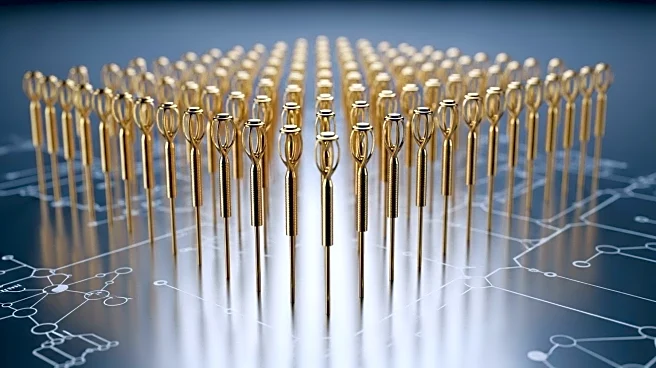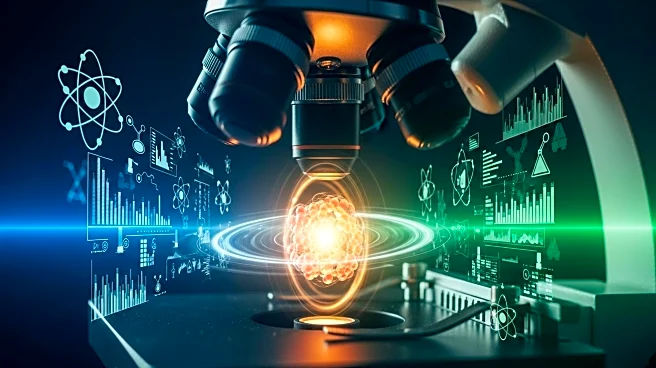What's Happening?
Researchers at the University of Tokyo, led by Shinjiro Takano, Yuya Hamasaki, and Tatsuya Tsukuda, have visualized the geometric structure of gold nanoclusters during their initial formation stages. They discovered a novel structure, termed 'gold quantum needles,' which exhibit unique properties due to their responsiveness to light in the near-infrared range. These structures could significantly enhance biomedical imaging resolution and improve light-energy conversion efficiency. The findings were published in the Journal of the American Chemical Society. Gold nanoclusters, typically composed of fewer than 100 atoms, are synthesized by reducing gold precursor ions in the presence of protective ligands. The researchers used unusual synthesis conditions to capture the nanoclusters at the earliest growth stages, revealing anisotropic growth and a new pencil-shaped structure composed of triangular trimers and tetrahedral tetramers.
Why It's Important?
The discovery of gold quantum needles is significant for the field of nanotechnology and biomedical applications. Their unique optical properties could lead to advancements in high-resolution imaging techniques, which are crucial for medical diagnostics and research. Additionally, the ability to convert light energy more efficiently could impact renewable energy technologies. Understanding the initial stages of nanocluster formation opens new avenues for targeted synthesis methods, potentially leading to the development of novel materials with specific desired properties. This research not only contributes to the fundamental understanding of nanocluster formation but also paves the way for practical applications in various scientific and industrial fields.
What's Next?
The researchers plan to refine synthesis conditions further to explore the creation of other unique nanoclusters. They aim to collaborate with experts to leverage the exceptional optical properties of gold quantum needles for practical applications. Future research may focus on enhancing the synthesis process to produce nanoclusters with tailored properties for specific applications in medicine, energy, and materials science. The ongoing exploration of these structures could lead to breakthroughs in nanotechnology and its integration into commercial and scientific use.
Beyond the Headlines
The discovery of gold quantum needles highlights the intersection of quantum mechanics and nanotechnology, showcasing how quantum phenomena can be harnessed to develop new materials. This research underscores the importance of interdisciplinary collaboration in advancing scientific knowledge and technological innovation. The ethical implications of nanotechnology, particularly in biomedical applications, may also be considered, as these advancements could lead to significant changes in healthcare practices and accessibility.











